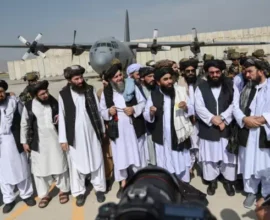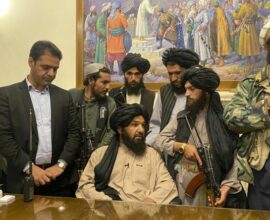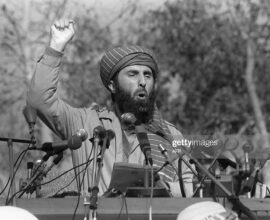Demystifying Operation Jalalabad
Jalalabad Operation was launched in 5 March 1989, by Mujahedeen comprising eight groups against Najibullah Regime. The operation in question remained (largely) shrouded in mystery. Many military and sometimes political analysts (ironically) on hold General Hameed Gul, then ISI Chief (unfairly) squarely responsible for the unsuccessfulness of the operation and its fallouts later on.
The fact of the matter is that most of discussions and analyses in our mainstream media are marked by gross shallowness and superficiality. Often times, the analysts, not from the relevant fields express their opinions, posturing and positioning as if they are expert of that particular field. Before looking into causes of failure of Jalalabad operation, it is essential to reflect on Afghan Jihad to cognize nature and psyche of various groups of Mujahedeen, which fought against Russians, which would make it easy to understand Operation Jalalabad.
During Afghan Jihad, there were scores of resistant groups fighting against invading Russian Army in their respective operational areas. Those groups would fight separately, following instructions of their own commanders. It might startle many that even against Russians, those groups never agreed upon any joint operation against the occupying forces, nor did they execute any joint venture during thirteen some years of resistance. Not being part of a regular army, many combatants would assemble at the calls of their commanders and disperse after having conducted a certain operation or completing the task assigned to them.
In late 80s, when Russians retreated, those groups continued to fight in their strongholds, following their field chiefs. So, the eight party coalition group forged to initiate Jalalabad Operation carried the legacy of differences and obeying their own field commanders fighting in their own operational areas. That diversity of command and interests amongst these groups foreshadow the issues which (later) contributed to failure of Operation Jalalabad.
In the spring of 1989, the eight-party, Afghanistan Mujahedeen, comprising around 500 field commanders, attacked Jalalabad in a bid to topple Najibullah regime and establish the government based on Sharia. In 1991, the Mujahedeen captured Khost, in the lead of Ustad Daud of Koochi Group and Captain Musa of Professor Abdulrab Rasul Sayyaf Group from North East, Commander Khalil Haqqani, brother of Moulana Jalaluddin Haqqani (a minister in interim government in Afghanistan) from South West. They ran through Khost overnight.
Following it, they besieged Gardez. It is a sad reality which would be unfair not to highlight that the Mujahedeen destroyed lots of war planes and other war machines deserted by Russians at Khost Airport. Many dismantled the planes and smuggled their parts into Pakistan to be sold in Peshawar Bara Market. Besides, they plundered the city of Khost; which earned bitter annoyance of the residents.
According to plan proposed by General Hameed Gul, in phase one, the Mujahedeen would launch an offensive on Jalalabad. It is pertinent to mention here that Jalalabad is a commercial hub: it serves as an economic artery of Afghanistan. The capture of Jalalabad would give immense psychological gain, and help the groups gain grounds in Jalalabad. In next phase, it was strategized that the Mujahedeen would advance to Kabul.
When Mujahedeen commanded by Engineer Ayyub and Engineer Mahmood, initiated the attack, they successfully advanced to Jalalabad and took a defense line. But the second line forces did not move on time; they procrastinated and that needless delay gave ample chance to the forces of Najibullah to augment themselves, advance and confront the Mujahedeen. Operation Jalalabad could have been a story of success, if the Mujahedeen had advanced to Kabul, using Kharwar Route which was open, but (tactlessly) they did not avail that option. In the meantime, Ramadan, the fasting month, came and the groups started complaining of the shortage of ration and routiyan (bread).
It is an interesting fact that at that critical juncture, Haji Ayyub Afridi , a well-known businessman, placed a grand order in hotels and ‘Tandoor Walas’ of Peshawar and dispatched trucks loaded with food to Jalalabad. But the Mujahedeen started vacating the areas under their control and finally retreated, thereby marking the failure of Operation Jalalabad.
It is yet another sad fact that Mujahedeen, after conquering Lal Pura Cantonment, housing a brigade plus army, equipped with tanks and artillery, also pillaged it. It is really significant to mention that Lal Pura housed a huge dairy form, containing thousands of buffalos. The Mujahedeen ransacked the farm, slaughtered tens of buffalos and divided them among themselves. Naturally, it earned ire of business community and local inhabitants. That infamous outright thuggery forewarned the locals in Jalalabad that their fate would not be any different if Mujahedeen seized it.
It is really significant to bring to the public eye that the entire plan envisaged by General Hameed Gul was primarily suggestive in nature, for General Hameed Gul did not have any command over the Mujahedeen: the only influence General Hameed Gul possessed was fundamentally moral in nature. Some groups also revered him for sharing same religious faith and being their erstwhile mentor in the war against the USSR.
In that backdrop, feeling pain of common Afghans and in an attempt to see Afghanistan becoming an Islamic State, General Hameed Gul tried hard to converge all commanders under one leadership and strive together to achieve the common goal of peace in Afghanistan. In fact he was successful in bringing all warring groups on the table and hammering out a combined strategy. But, later (unfortunately), they disagreed, ignoring all his counsels and appeals, leaving the general distraught.
It appears apropos to bring the point that Talibans and the Mujahedeen fighting against Russians are totally different in terms of their organizational structure, planning and executing actions. The Taliban follow one command, i.e. Amir and operate according to the instructions given to them. They do not have any issue of unity of command and unity of actions which were dearly wanting amongst Mujahedeen. The Taliban have structured themselves more like a regular army with various departments like intelligence, military planning, handling the media, etc. Displaying farsightedness, they inducted their men in Afghan National Army and other institutions to gain training in various diverse fields. And the result is in front of the entire world.
At the present time, it is disturbing to hear those military officers deliberating on the role of General Hameed Gul who were either not in Pakistan army or were very juniors during time of Operation Jalalabad; so they did not have any real understanding of what was going at higher level. In this context ,the comments of General Javed Ashraf Qazi ,former DG ISI, came as a shock to many who termed operation Jalalabad as ‘a folly of General Hameed Gul’ :which was indeed an insult to General Hameed Gul, who enjoyed enormous standing amongst military circles and civilians not only in Pakistan but also worldwide. Similar superficial remarks about the operation came from Chaudhry Aitzaz Ahsen, a lawyer, associated with the PPP, defying any logic. Such unfounded criticism cannot belittle standing and stature of General Hameed Gul whose eminence, being an excellent military planner and a valiant solider, is accredited by friends and foes alike.
The writer can be reached at sliklight55@gmail.com





